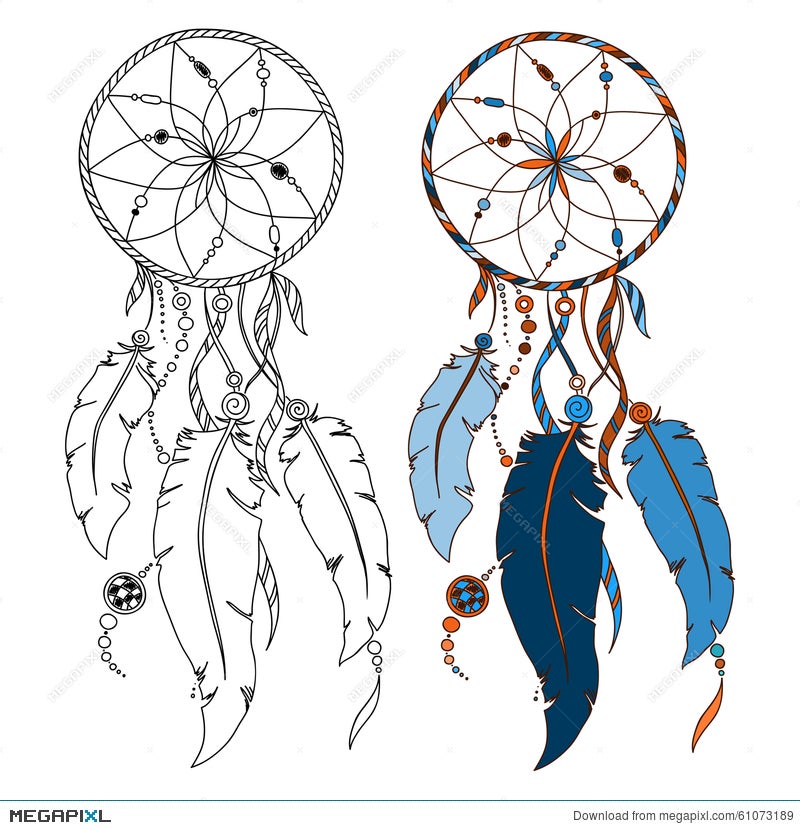Native Indian Dream Catcher

Dream catchers are arts and crafts of the Native American people. The original web dream catcher of the Ojibwa was intended to teach natural wisdom. Nature is a profound teacher. Dream catchers of twigs, sinew, and feathers have been woven since ancient times by Ojibwa people. They were woven by the grandfathers and grandmothers for newborn children and hung above the cradleboard to give the infants peaceful, beautiful dreams. The night air is filled with dreams. Good dreams are clear and know the way to the dreamer, descending through the feathers. The slightest movement of the feathers indicated the passage of yet another beautiful dream. Bad dreams, however, are confused and confusing. They cannot find their way through the web and are trapped there until the sun rises and evaporates them like the morning dew.
By Jade Small: It is believed that the origin of the Native American dream catcher (or Indian dream catchers) is from the Ojibwa Chippewa tribe. The Ojibwa would tie strands of sinew string around a frame of bent wood that was in a small round or tear drop shape. Dream catchers are arts and crafts of the Native American people. The original web dream catcher of the Ojibwa was intended to teach natural wisdom. Nature is a profound teacher. Dream catchers of twigs, sinew, and feathers have been woven since ancient times by Ojibwa people.


Originally the Native American dream catcher was woven on twigs of the red willow using thread from the stalk of the stinging nettle. The red willow and twigs from other trees of the willow family, as well as red twig dogwood can be found in many parts of the United States. These twigs are gathered fresh and dried in a circle or pulled into a spiral shape depending upon their intended use. They used natural feathers and semi-precious gemstone, one gemstone to each web because there is only one creator in the web of life.

Dream catchers are one of the most fascinating traditions of Native Americans. The traditional dream catcher was intended to protect the sleeping individual from negative dreams, while letting positive dreams through. The positive dreams would slip through the hole in the center of the dream catcher, and glide down the feathers to the sleeping person below. The negative dreams would get caught up in the web, and expire when the first rays of the sun struck them.
The dream catcher has been a part of Native American culture for generations. One element of Native American dream catcher relates to the tradition of the hoop. Some Native Americans of North America held the hoop in the highest esteem, because it symbolized strength and unity. Many symbols started around the hoop, and one of these symbols is the dream catcher.
Dream Catcher Lore:
Native Americans believe that the night air is filled with dreams both good and bad. The dream catcher when hung over or near your bed swinging freely in the air, catches the dreams as they flow by. The good dreams know how to pass through the dream catcher, slipping through the outer holes and slide down the soft feathers so gently that many times the sleeper does not know that he/she is dreaming. The bad dreams not knowing the way get tangled in the dream catcher and perish with the first light of the new day.
Indian Dreamcatcher Meaning
How the Dream Catcher is made:
Native American Dream Catcher Drawing
Using a hoop of willow, and decorating it with findings, bits and pieces of everyday life, (feathers, arrow heads, beads, etc) the dream catcher is believed to have the power to catch all of a person’s dreams, trapping the bad ones, and letting only the good dreams pass through the dream catcher.